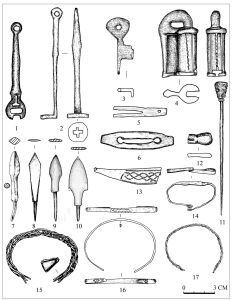a Institute of Archaeology RAS, Moscow, Russia
#E-mail: nnhora@yandex.ru
Keywords: the Oka estuary area, the Volga-Oka right bank, Nizhny Novgorod, urban development, rural areas, the Golden Horde period.
The article summarizes the archaeological data on Nizhny Novgorod and sites of its rural vicinity up to the mid-14th century. The author identifies inventory that had disappeared from the local use by the said chronological milestone. The results of inventory mapping indicate a noticeable growth of the urban residential area outside the walls of the fortress of 1221 and the formation of the main areas of rural settlement in the urban vicinity even before the city was transferred to the possession of Suzdal princes. Many of the largest rural settlements of the period of the Nizhny Novgorod-Suzdal principality were founded as early as in the 13th–early 14th century. Archaeological data show a noticeable increase in the population of the region already within the first centenary following the foundation show a significant increase of Nizhny Novgorod. An assumption is made about the decisive importance that the formation of a new system of international communications had for the development of the town in the Oka estuary in the middle of the 13th century.
DOI: 10.31857/S0869606322010068








